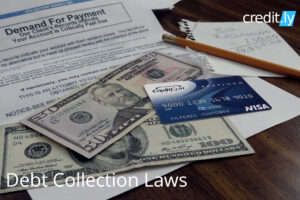FICO has a little competition. Introducing VantageScore. VantageScore is a credit scoring model that first emerged in 2006 as a joint venture of the major credit bureaus—Experian, Equifax and TransUnion. VantageScore ratings range from 350 to 800. VantageScore4.0, released in 2017, is the most recent version of the scoring model and contains several updates over VantageScore3.0. For example, medical accounts in collections are no longer weighted as heavily as they were in earlier models.
However, lenders who use the VantageScore most commonly follow 3.0 version calculations. According to VantageScore, this version of the model not only provides scores to general consumers but also helps 30 to 35 million adults who may not have a credit profile with alternative models, because they’re either new to the world of creditor don’t use credit frequently.
Now that you know what the VantageScore is, you may wonder what impacts this score and how your score measures up.
Who Uses This New Score and Why Should I Care?
VantageScore reports that 2,500 unique lenders used the rating system more than 10.5 billion times between July 2017 and June 2018. Credit card issuers represent 4.4 billion of these utilizations or about 42% of the total.
What Is a Good VantageScore? What Do the Numbers Mean?
With 2013’s release of VantageScore3.0, the updated model mirrors the scale of the FICO score to make it easier for lenders and consumers to understand the implications of a VantageScore. With both rating systems, the credit score range is as follows:
- Bad credit: 300-599
- Poor credit: 600-649
- Fair credit: 650-699
- Good credit: 700-749
- Excellent credit: 750-850
Lenders sometimes categorize borrowers as either prime or subprime based on their credit scores. Prime borrowers generally have credit scores of at least 700 and represent a lower risk for the lender. Subprime borrowers are less likely to get approval for financing. If you’re a subprime borrower, you’re going to pay higher interest rates for credit cards and loans.
What Are the Advantages of VantageScore3.0 Compared to Other Scoring Models?
VantageScore3.0 has a few advantages for anyone with a credit score. The biggest is that VantageScore3.0 will calculate a score for those who have a low or non-existent credit score. Most scoring models require at least six months of credit history and recent credit report updates. VantageScore3.0 only requires one month of credit history. If you have little to no credit, VantageScore3.0 gives you easier access to your credit.
Other notable improvements include the following:
- Ignoring all paid collections, as well as any collections, paid or unpaid, under $250
- A new score range of 300 to 850, the same scale used by FICO, making it easier for consumers to interpret and manage their credit scores
- Credit relief for disaster victims by ignoring accounts negatively impacted by natural disasters
How is VantageScore4.0 Different than Vantage Score3.0?
While most lenders use VantageScore 3.0, it’s important to know how it differs from VantageScore 4.0. VantageScore 4.0 has some major updates. Here are a few:
- The VantageScore 4.0 incorporates what VantageScore calls trended credit data. In a nutshell, trended credit data will illustrate how your credit behavior has changed. For example, if you’ve made late credit card payments in the past but currently make every payment on time, trended credit data will make note of that pattern change.
- For those who have no updates to their credit report in six months, VantageScore 4.0 uses machine learning techniques. If you fall under the previously mentioned category, machine learning techniques will help develop your scorecard.
What Different Factors Influence My VantageScore Number?
Like other credit scores, your Vantage credit score relies entirely on credit bureau information to predict how likely you are to pay your credit obligations on time each month. There are five key factors that affect your credit score:
- Payment history: 35% of your score
- Credit utilization: 30% of your score
- Average age of credit accounts: 15% of your score
- Account types: 10% of your score
- Inquiries: 10% of your score
If you’re wondering exactly how these factors play into your credit score, here’s a breakdown of each:
1. Payment History
According to VantageScore, your payment history is the single most important factor in your score. Your payment history is your record of the bills you’ve paid—whether or not you’ve paid them on time. Make sure to make all payments in full and on time to boost your rating.
2. Credit Utilization
Credit utilization is how much of your available credit you’re using. Try to use less than 30% of your available credit. If you have one credit card with a $5,000 limit, carry a balance of no more than $1,500.
3. Average Age of Credit Accounts
If you have older credit accounts in your credit history, it’ll have a great effect on your credit score. This shows lenders that you have an established history of responsible financial management. So even if you have a credit card and aren’t using it, keeping it open could help your credit score for the better.
4. Account Types
If you have a variety of accounts, you show lenders that you can responsibly manage different types of debt. Try to have a good amount of account types, such as revolving accounts, installment accounts and open accounts.
5. Credit Inquiries
Whenever you apply for credit, it’s not uncommon for lenders to do hard inquiries into your credit. If you have multiple credit inquiries, your credit score will be lower. This is because lenders typically get nervous when someone applies for multiple lines of credit at once.
You can improve your VantageScore by making changes to these factors. Pay down your credit card balances to improve debt utilization. Avoid applying for new credit cards you don’t need and pay off old debts that may be affecting your score.
So What Doesn’t Impact My Credit Scores?
There are several things that don’t factor into the VantageScore model—or any other credit scoring model, for that matter—including race, religion, nationality, gender, marital status, age, salary, occupation, employer, employment history, where you live or your total assets.
Where Can I Get My Credit Score?
Make sure that your credit score is in good shape by checking it through Credit.ly. You’ll receive your free Experian credit score and a personalized credit report card.
[/et_pb_text][/et_pb_column][/et_pb_row][/et_pb_section]









